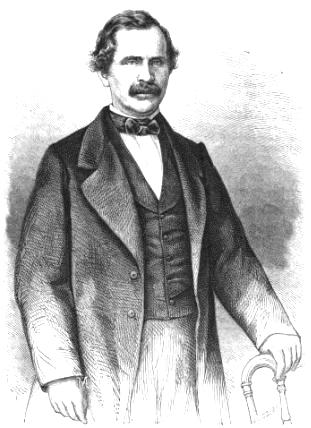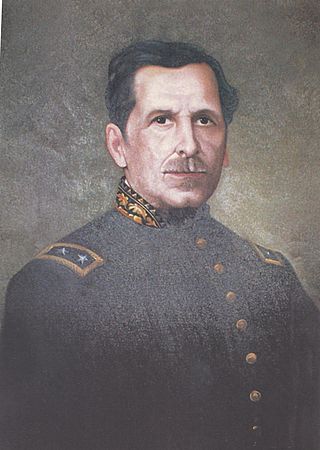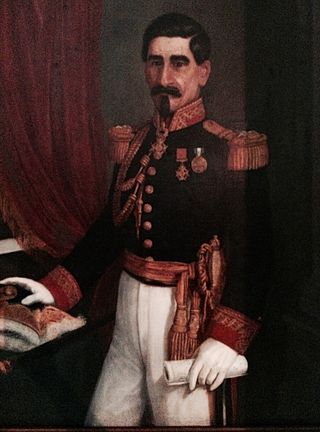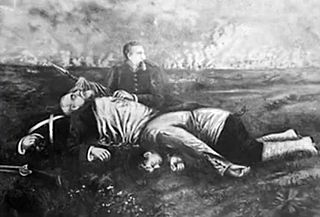
José Rafael Carrera y Turcios was the president of Guatemala from 1844 to 1848 and from 1851 until his death in 1865, after being appointed President for life in 1854. During his military career and presidency, new nations in Central America were facing numerous problems: William Walker's invasions, liberal attempts to overthrow the Catholic Church and aristocrats' power, the Civil War in the United States, Mayan uprising in the east, Belize boundary dispute with the United Kingdom, and the wars in Mexico under Benito Juárez. This led to a rise of caudillos, a term that refers to charismatic populist leaders among the indigenous people.

Eugenio Aguilar González was a Salvadoran politician who served as president of El Salvador from 1846 to 1848. He also served as the mayor of San Salvador in 1839 and 1864, and the president of the Legislative Assembly in 1849.

Doroteo Vasconcelos Vides y Ladrón de Guevara was President of El Salvador 7 February 1848 - 1 February 1850 and 4 February 1850 – 1 March 1851. Vasconcelos was close friend of Honduran general Francisco Morazán. He tried to invade Guatemala and defeat general Rafael Carrera on 2 February 1851 but he was defeated. After defeat, he retired from public life.

Francisco Dueñas Díaz was a Salvadoran politician and member of the Conservative Party who served as President of El Salvador on four different occasions between 1851 and 1871. J. Lloyd Mecham described El Salvador during Dueñas' presidency as "experienced a far-reaching Conservative reaction".

José Gerardo Barrios Espinoza was a Salvadoran military officer and politician who served as president of El Salvador on three occasions between June 1858 and his overthrow in October 1863.

Santiago González Portillo was a Salvadoran military officer and general who served as the President of El Salvador from 15 April 1871 to 1 February 1876.

Andrés del Valle Rodríguez was President of El Salvador from February 1 until May 1, 1876.

The Catholic Church in El Salvador is part of the worldwide Catholic Church, under the spiritual leadership of the Pope in Rome and the Episcopal Conference of El Salvador. There are almost 5 million Catholics in El Salvador. The country is divided into eight dioceses including one archdiocese, San Salvador. The Constitution explicitly recognizes the Catholic Church and it has legal status.

Timoteo Menéndez was a Salvadoran politician who served twice as head of state of El Salvador when it was a state within the Federal Republic of Central America.
The Revolution of the 44 was a military rebellion led by a group of Salvadoran generals and landowners, known as "the 44", against the government of President General Carlos Ezeta and Vice President General Antonio Ezeta.
Mariano Paredes (1800—1856) was President of Guatemala from January 1, 1849 to November 6, 1851 as a compromise chief of state. Paredes, an army colonel, came to power after Rafael Carrera was ineffective in quelling uprisings in eastern Guatemala and short-term governments failed to restore order. But Mariano Paredes was unable to control Guatemala.
The Battle of La Arada was fought on 2 February 1851 near the town of Chiquimula in Guatemala, between the forces of Guatemala and an Allied army from Honduras and El Salvador. As the most serious threat to Guatemala's liberty and sovereignty as a republic, it was the most important military victory in the country's history as an independent state.

Vicente Cerna y Cerna was president of Guatemala from 24 May 1865 to 29 June 1871. Loyal friend and comrade of Rafael Carrera, was appointed army's Field Marshal after Carraera's victory against Salvadorian leader Gerardo Barrios in 1863. He was appointed Carrera's successor after the caudillo's death in 1865 even though Guatemalan leaders would have preferred Field Marshal José Víctor Zavala.

José Víctor Ramón Valentín de las Ánimas Zavala y Córdova was a Guatemalan Field Marshal who participated in the wars of Rafael Carrera and the National War of Nicaragua against the invasion of William Walker. After the death of President Carrera in April 1865, Zavala – who was a close friend of the late President – was proposed as the next president, but instead Field Marshal Vicente Cerna y Cerna was appointed. A military brigade headquarters in Guatemala City is named "Mariscal Zavala Brigade" in his honor.

Tourism accounts for a large part of El Salvador's economy. El Salvador has many natural attractions including beaches with some of the best surfing breaks on the Pacific Coast. El Salvador offers many lush forests shrouded in cool temperatures with abundant wildlife and scenic mountain-top vistas. El Salvador also has great potential in the field of cultural tourism; with over 2,000 known archaeological sites, mostly of the Maya and Olmec cultures. These sites are of international interest for their easy access and well-preserved remains.

The First Central American Civil War was a civil political and military conflict within the Federal Republic of Central America which lasted from 1827 until 1829. The civil war was fought between Liberal and Conservative lines with Francisco Morazán leading the Liberals and Manuel José Arce, a former Liberal, leading the Conservatives.

The Battle of Chalchuapa was a battle between the military forces of El Salvador and Guatemala from 1–2 April 1885. Guatemalan President Justo Rufino Barrios was killed during the battle.

Barrios' War of Reunification, also known as Barrios' great attempt, was a war initiated by Guatemalan President Justo Rufino Barrios in 1885 with the goal of reunifying Central America. Of the five Central American countries, only Honduras supported Barrios' reunification effort; Costa Rica, El Salvador, and Nicaragua opposed it, as did Mexico.
The War of 1863 was a conflict fought between El Salvador and Guatemala from 13 February 1863 to 26 October 1863.














